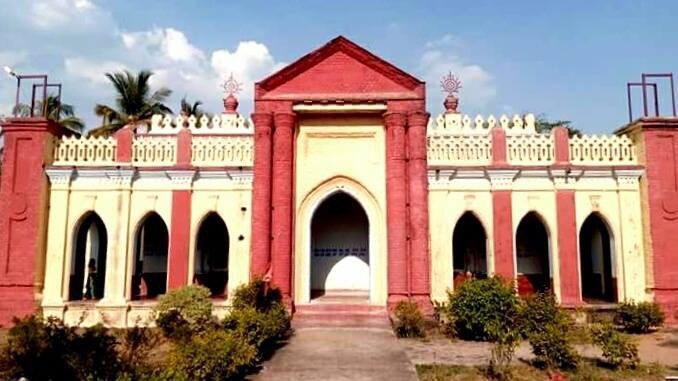In the name of Lord Jagannath, a temple was built by the then King Dayanidhi Singh at Narsinghpur in Cuttack district in 1686.
Legend has it that the king had helped Puri Gajapati in the battle of ‘Kujanga’. Pleased by this, the Gajapati gave the title of ‘ Mansingh Harichandan’ to the King of Narsinghpur and a permission to build a Jagannath temple and follow the ‘Chhatisha Niyoga Bhog’ rule.
Back from war, King Dayanidhi established the Chaturdha idols in a small temple under a ‘Baula’ tree in his fort.
King Ananta Narayan Mansingh converted the temple into a shrine in 1934. Since he had taken the help of the British government, the temple was constructed in the style of British architecture. There is no Kalasa, Amalaka and Sikhara in the temple’s architecture though these are the essential parts of a Hindu temple. The temple looks like British church but Lord Jaganath is worshiped there.
It’s still everybody’s guess when Rath Yatra started here. According to researchers, it’s a 300-year-old ritual. After Independence, the King lost his kingdom,due to which no Rath Yatra could be held from 1950 to 1978. However, in 1979, with the help of locals, the royal family and the Endowment Department, the festival was held in the town.
Following the culture of Puri temple, the Dev Snana Purnima is celebrated on the birthday of Lord Jagannath. On the day of Jyestha Purnima, the deities are taken out to the Snana Bedi in a procession. They are bathed and decorated in the ‘Gaja’ besa for the devotees of Narsinghpur.
There are two wells in the temple like those in Puri. The deities take bath with 108 pots of cold water to fight the heat of the summer. After the royal bath, the deities become ‘sick’ and stay away from public view for 15 days.
After 13 days, the deities return from the ‘Anasara’ home. On the 14th day, a special puja is performed by the chief priest. On the 15th day, the Rath Yatra is performed in Narsinghpur town.
The deities are taken out in a procession to their aunt’s house situated at Club House. The idols remain there for nine days. In Narsinghpur, one richly decorated chariot, resembling temple structure, is arranged for the Lords’ Rath Yatra. Earlier two chariots were used in Rath Yatra. While one carried Balabhadra, Subhadra and Jagannath another chariot carried the idols of Patitapabana and Prasanamani to Gundicha temple. This was the speciality of Narsinghpur’s Rath Yatra. However, due to apathy of the administration, only one chariot is arranged now.
The procedure of offering prasad to the deities is same as in Puri – six times a day at a particular time — starting from early morning when different kinds of pitha, vegetables, rice and dal are offered to Lord Jagannath and his siblings.
There is a Bimala temple on the premises of the Jagannath temple including small temples of Parswa-devatas like Bamana, Baraha and Nursimha and Nilamadhaba. At the entrance of the temple, the Patitapawana gives appearance to the devotees. Like Lokanath temple in Puri, there is also a Shiva temple in the name of Biswanath.
King Ananta had donated 141 acres to the temple and employed various types of servitors. After Independence, the temple went to the hands of the Endowment Department. A trust has been set up for its management.
